What Are Moroccan Spices and Why Are They Special?
Moroccan spices are a vibrant blend of aromatic herbs and spices that create the signature flavors of Moroccan cuisine. Key spices include cumin, cinnamon, paprika, ginger, and saffron, often combined in blends like Ras El Hanout. These spices add depth, warmth, and complexity to dishes, from tagines to couscous, and are essential for authentic North African cooking. This guide covers everything you need to know: core spices, usage tips, pairing guides, buying advice, and easy recipes for home cooks.
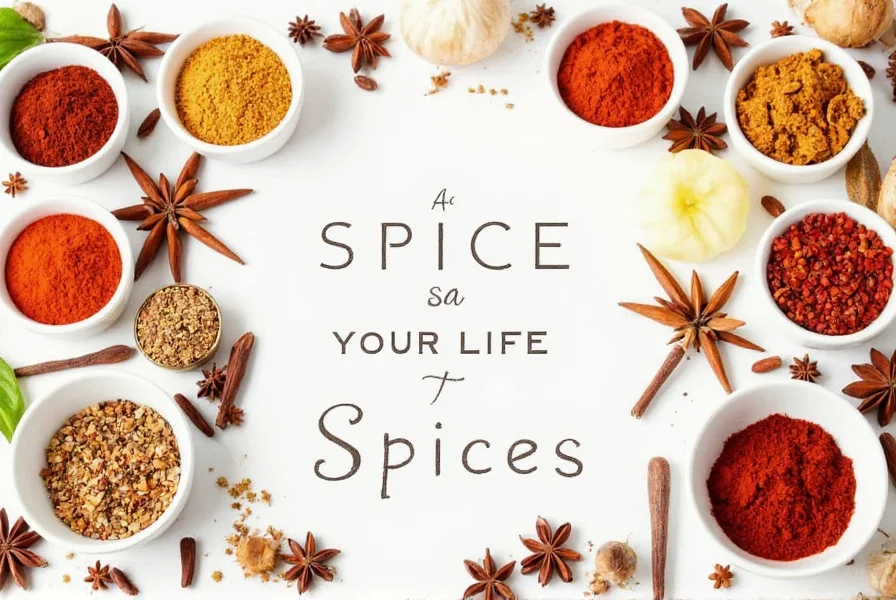
What Makes Moroccan Spices Unique?
Moroccan cuisine sits at the crossroads of North African, Mediterranean, Middle Eastern, and Andalusian influences. This melting pot has created a flavor profile that's simultaneously bold yet balanced. Here's what sets Moroccan spices apart:
- Versatility: Many blends work across meat, vegetables, soups, and even desserts.
- Sweet & Savory Fusion: Think cinnamon in stews or orange blossom water in rice dishes.
- Layered Flavors: Spices are usually added early in cooking to build depth, rather than just sprinkled on top.
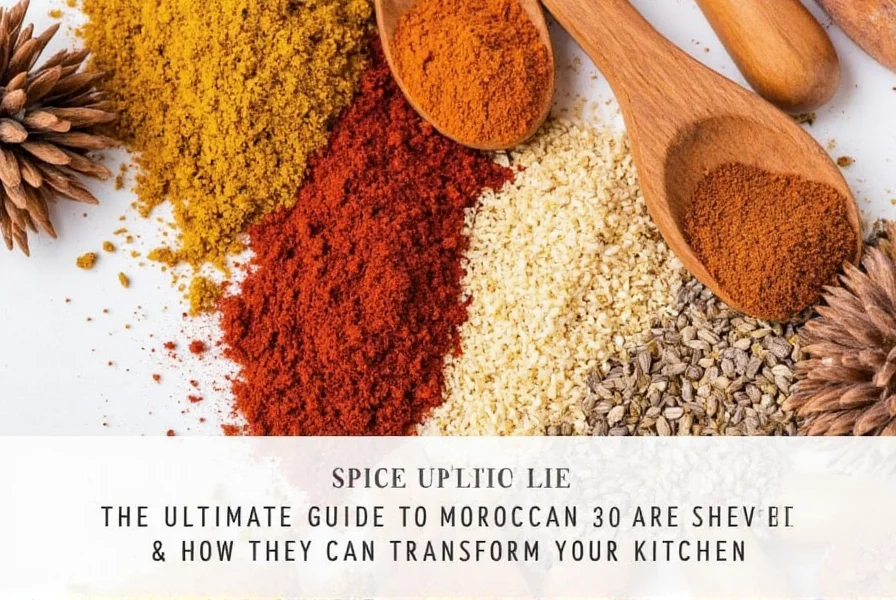
Now let's dive into the stars of the show — the core spices that make Moroccan food so uniquely flavorful.
The Core Spices of Morocco
While Moroccan spice cabinets vary by region and family, there are a few essential players that appear in almost every kitchen. Let's break them down:
| Spice | Flavor Profile | Common Uses |
|---|---|---|
| Cumin | Earthy, nutty, slightly bitter | Tagines, soups, grilled meats |
| Paprika | Smoky, mild, sweet | Garnish, couscous, marinades |
| Cinnamon | Warm, sweet, woody | Desserts, lamb dishes, tea |
| Coriander | Citrusy, floral, peppery | Rubs, legumes, vegetable dishes |
| Ginger | Spicy, zesty, fresh heat | Stews, chermoula, meatballs |
| Saffron | Earthy, floral, slightly metallic | Lamb tagine, pastilla, paella-style dishes |
Beyond single spices, Moroccan cooks love complex spice mixes. One of the most famous is:
Ras El Hanout
Translating to "top of the shop," Ras El Hanout is a blend of anywhere from 10 to 30 different spices, often including cardamom, turmeric, allspice, and dried rose petals. It's a signature seasoning in many Moroccan dishes.
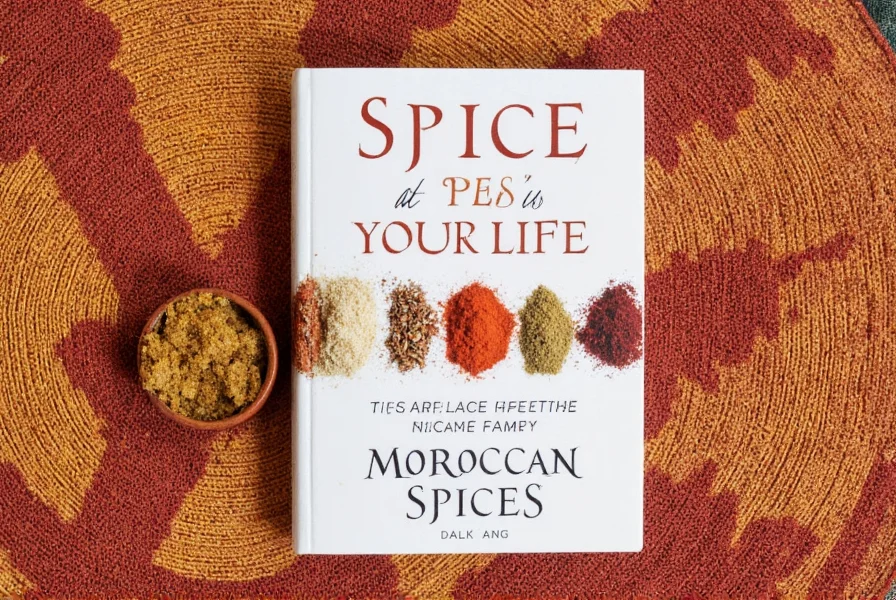
Pro Tips for Using Moroccan Spices at Home
You don't need a Berber grandmother to master Moroccan spices. Just follow these tips and start building your own exotic pantry:
- Toasting is Key: Lightly toast whole seeds (like cumin or coriander) before grinding them to unlock their full aroma.
- Use Fresh Spices: Ground spices lose potency after about six months. Buy small quantities and store in airtight containers away from light.
- Balance Sweet & Heat: A pinch of cinnamon in a lamb dish balances out the smokiness of paprika. Likewise, a touch of honey pairs beautifully with harissa paste.
- Make Ahead Spice Blends: Prepare a few staple blends like Ras El Hanout or Chermoula for quick meal prep during the week.
- Think Beyond Meat: Use Moroccan spices on roasted squash, carrots, or cauliflower — they bring earthy warmth and complexity to veggies too!
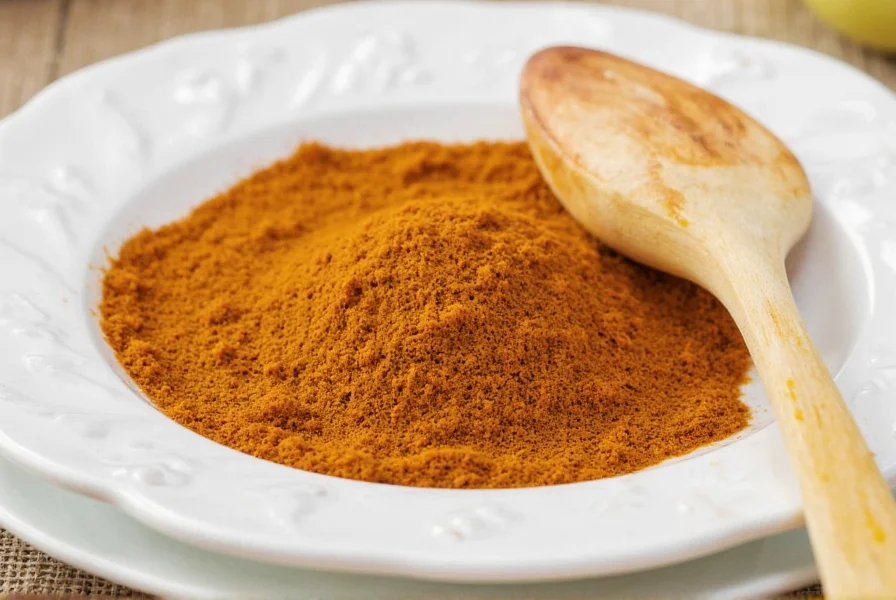
How to Pair Moroccan Spices with Ingredients
Moroccan cuisine thrives on contrasts — tart vs. sweet, tender vs. crisp, rich vs. light. Here's a handy guide on what goes well with which spice:
| Spice | Best For | Pairs With |
|---|---|---|
| Cumin | Red meats, lentils, beans | Tomatoes, lemon, garlic |
| Cinnamon | Lamb, chicken, rice | Honey, apricots, almonds |
| Ras El Hanout | Slow-cooked stews, merguez sausage | Prunes, olives, preserved lemons |
| Paprika | Eggs, potatoes, seafood | Onions, olive oil, smoked paprika |
| Harissa | Grilled fish, flatbreads, hummus | Feta cheese, chickpeas, eggplant |
This flavor synergy is why a simple chicken thigh can taste like a feast when dusted with Ras El Hanout and served over saffron rice.
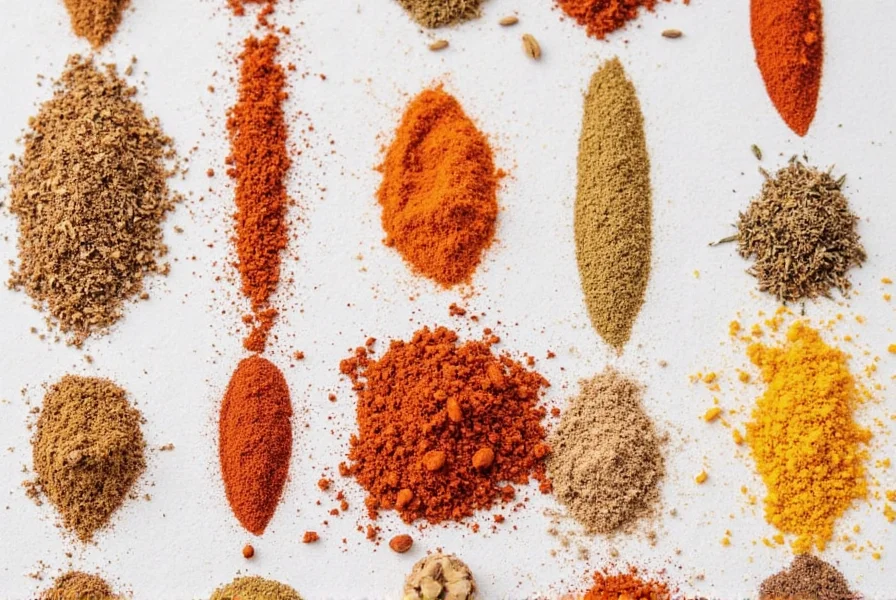
Buying Guide: Choosing the Best Moroccan Spices
Whether you're shopping online or at a specialty market, here's what to look for in high-quality Moroccan spices:
Things to Look For
- Aroma: High-quality spices should have a strong scent when opened.
- Color: Vibrant hues mean freshness — especially important for saffron threads or paprika.
- Ingredients: Check labels. Authentic Ras El Hanout doesn't contain preservatives or artificial additives.
Top Moroccan Spice Products to Consider
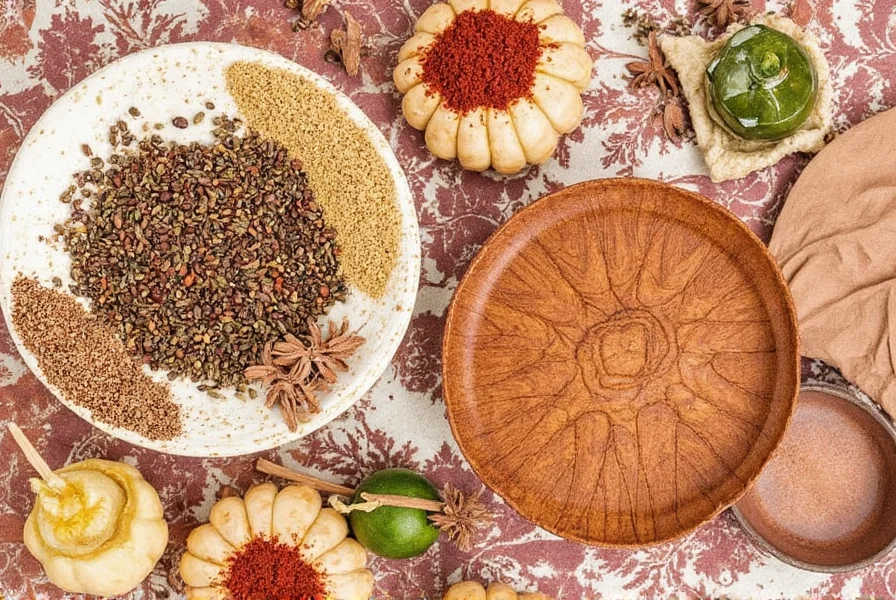
Atlas Organics – Ras El Hanout
- Features: Organic, hand-blended in Fez, 15+ spices
- Advantages: Rich flavor, no fillers
- Use Cases: Tagines, lamb shank, roasted eggplant
- Target Audience: Gourmands and adventurous home cooks
- Suitable Occasions: Dinner parties, holiday meals
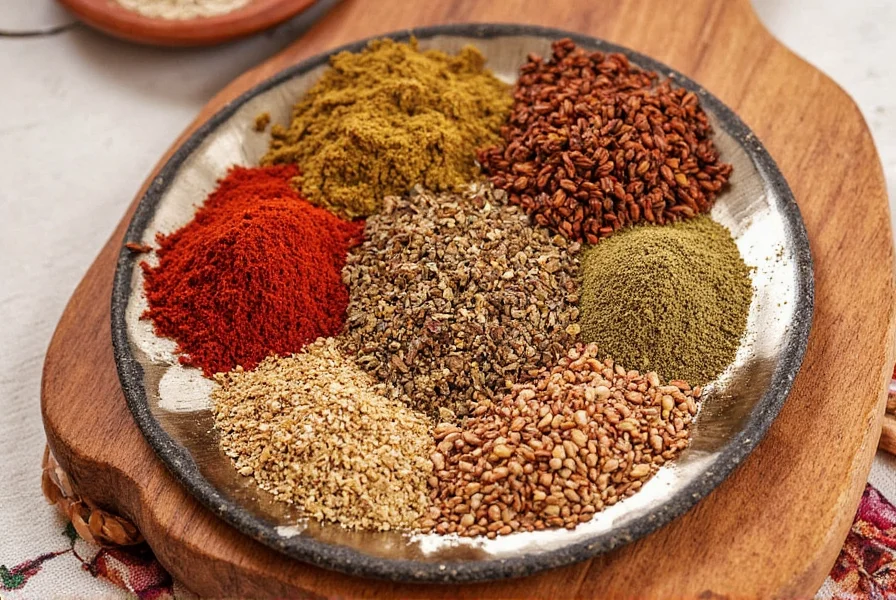
Tunisiana Spices – Harissa Paste
- Features: Traditional recipe, sun-dried chili peppers, olive oil base
- Advantages: Smoky, fiery kick without being overpowering
- Use Cases: Marinades, dips, pasta sauces
- Target Audience: Hot sauce lovers, grilling enthusiasts
- Suitable Occasions: Summer cookouts, weekday stir-fries
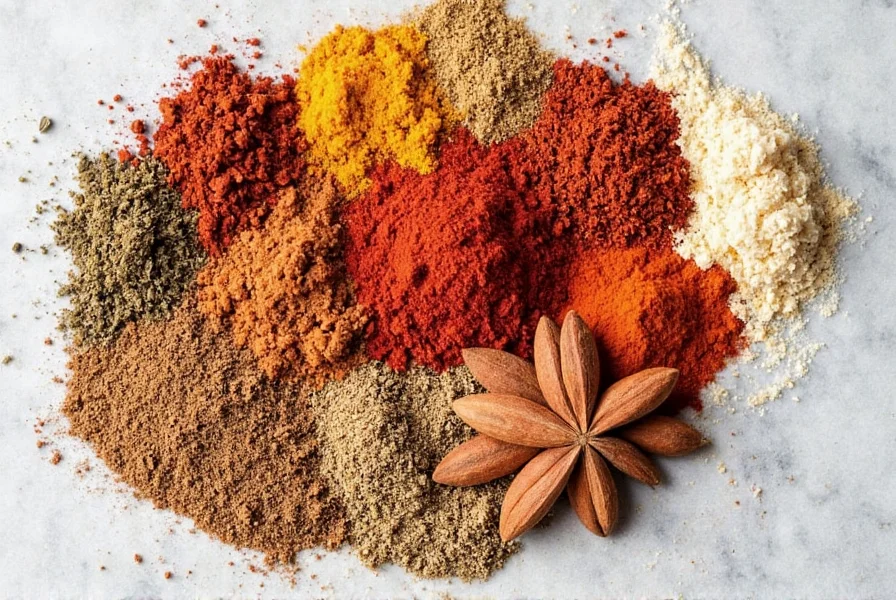
Sahara Spice Co – Chermoula Blend
- Features: Ready-to-use spice mix, includes cilantro, garlic powder
- Advantages: Time-saving, pre-balanced flavors
- Use Cases: Fish tacos, grilled shrimp, tofu skewers
- Target Audience: Weeknight chefs, vegan cooks
- Suitable Occasions: Quick dinners, casual entertaining
Tasty Recipes Featuring Moroccan Spices
Ready to try some authentic Moroccan dishes at home? Here are three easy yet impressive recipes that showcase the best of Moroccan spices:
1. Cumin & Saffron Roasted Carrots
Ingredients: Carrots, olive oil, cumin, saffron threads, salt, honey
Method: Toss carrots with oil and spices, roast until caramelized. Drizzle with honey before serving.
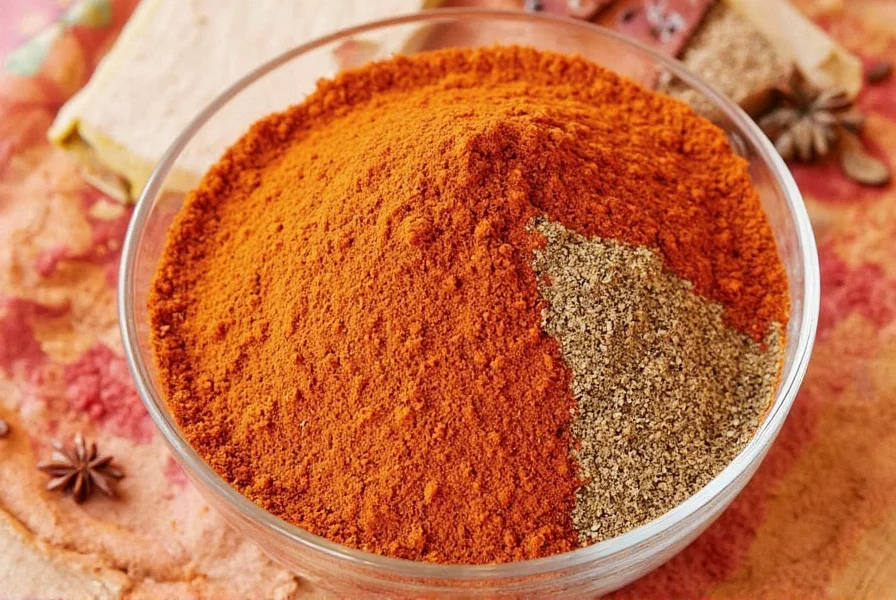
2. Chicken Tagine with Ras El Hanout
Ingredients: Chicken thighs, onions, garlic, tomatoes, olives, prunes, Ras El Hanout
Method: Brown chicken, sauté aromatics, add spices and simmer everything together in a Dutch oven or tagine pot.
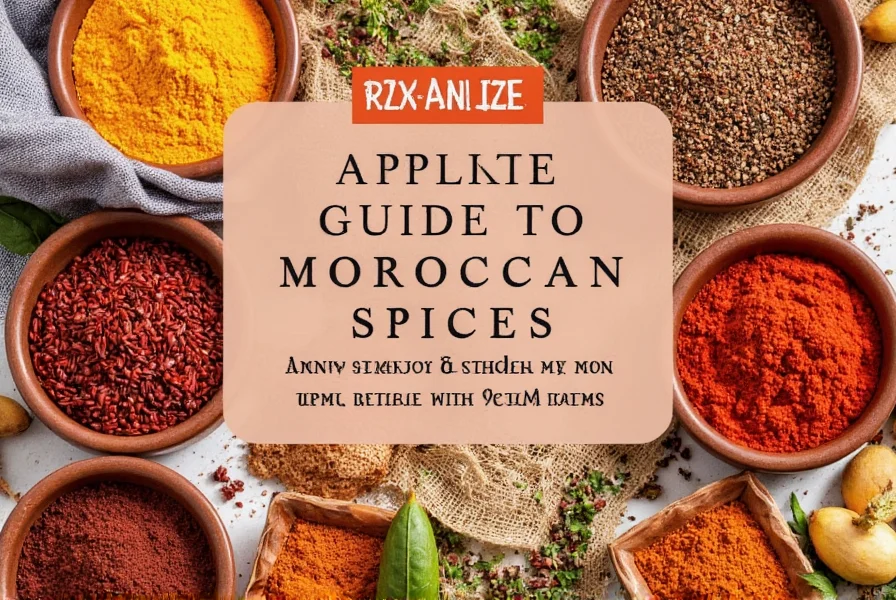
3. Harissa Hummus with Pita Chips
Ingredients: Chickpeas, tahini, lemon, garlic, harissa paste, olive oil
Method: Blend all ingredients in a food processor, drizzle with olive oil and garnish with paprika.

Frequently Asked Questions About Moroccan Spices
What are the 5 essential Moroccan spices every kitchen should have?
Based on traditional Moroccan cooking, the 5 essential spices are: cumin (for earthy depth in tagines and soups), cinnamon (for balancing sweet and savory dishes), paprika (for color and mild smokiness), ginger (for bright, zesty notes), and saffron (for luxurious color and floral notes in special dishes). While Ras El Hanout is incredibly important, it's a blend of many spices rather than a single essential spice.
How should I properly store Moroccan spices to maintain their freshness?
Store spices in airtight containers away from heat, light, and moisture. Whole spices last longer (up to 2-3 years) than ground spices (6-12 months). For precious spices like saffron, keep them in dark glass containers in a cool cupboard. Never store spices above the stove where heat and steam can degrade them. For maximum flavor, buy smaller quantities more frequently rather than large bulk purchases.
What's the difference between Moroccan spice blends and other global spice mixes?
Moroccan blends like Ras El Hanout are unique for their balance of sweet and savory elements, often containing both warm spices (cinnamon, clove) and earthy spices (cumin, coriander). Unlike many Indian spice blends which focus on heat, Moroccan mixes prioritize aromatic complexity. Also unique is the common inclusion of floral elements like rose petals or orange blossom in some traditional blends.
Are all Moroccan spices very hot/spicy?
No, this is a common misconception. While harissa (chili paste) is spicy, most traditional Moroccan spice blends are not primarily about heat. Moroccan cuisine focuses on complex flavor layers rather than burning heat. Many signature spices like cinnamon, cumin, and saffron provide warmth and depth without significant spiciness. The heat level is usually adjustable based on personal preference.
Can I substitute any Moroccan spices if I can't find them locally?
While authentic flavor comes from the real spices, here are reasonable substitutions: For Ras El Hanout, mix equal parts cumin, coriander, ginger, and a pinch of cinnamon. For harissa, use a mix of red chili flakes, garlic, and smoked paprika with olive oil. Saffron is hard to substitute, but a pinch of turmeric with a few drops of honey can mimic some color and sweetness. Note that substitutions won't be identical but can work in a pinch.
How do I know if my Moroccan spices are still fresh and potent?
Fresh spices should have vibrant color and a strong aroma. If you have to put your nose very close to smell them, they've likely lost potency. For paprika and saffron, the color should be vivid (deep red for paprika, rich golden-orange for saffron). Ground spices typically lose potency after 6-12 months, while whole spices can last 2-3 years. When in doubt, replace them - stale spices won't deliver authentic flavor.
Conclusion
Moroccan spices are more than just seasonings — they're a passport to a vibrant, flavorful culture rooted in centuries of trade, tradition, and storytelling. From warming cumin to fiery harissa, these spices have the power to transform the mundane into the extraordinary.
So next time you reach for the salt and pepper, give your taste buds a treat and grab a pinch of Ras El Hanout instead. Whether you're hosting friends or just spicing up your weeknight dinner, Moroccan spices promise to elevate your cooking game — one pinch at a time.
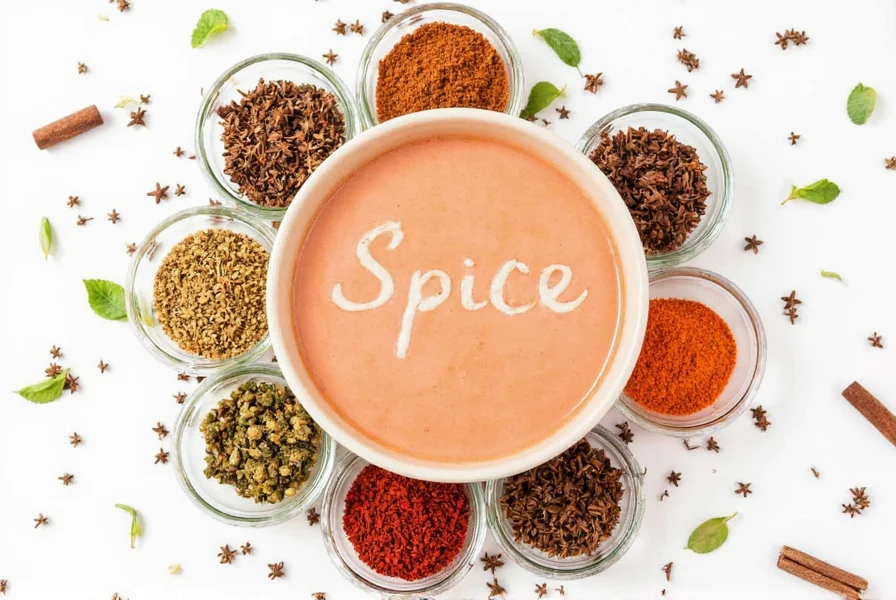

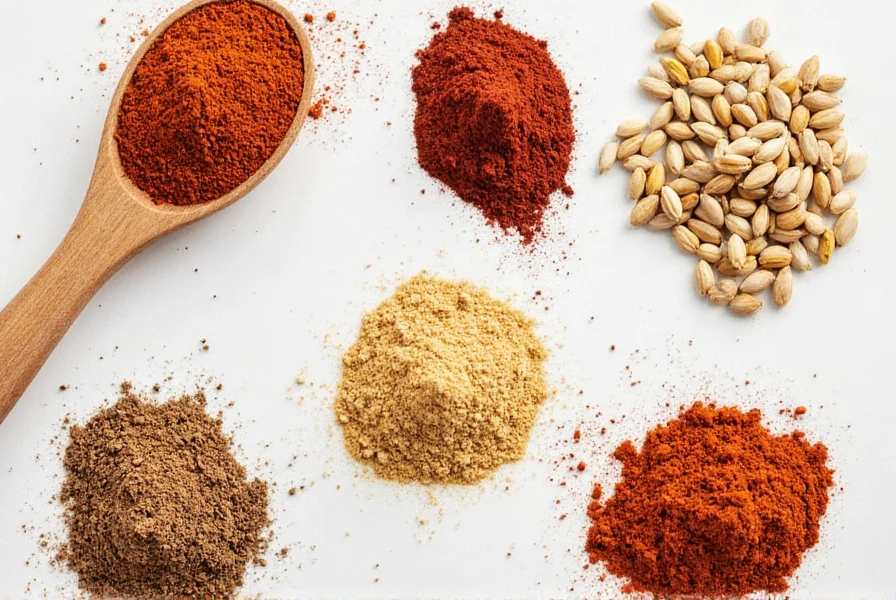









 浙公网安备
33010002000092号
浙公网安备
33010002000092号 浙B2-20120091-4
浙B2-20120091-4